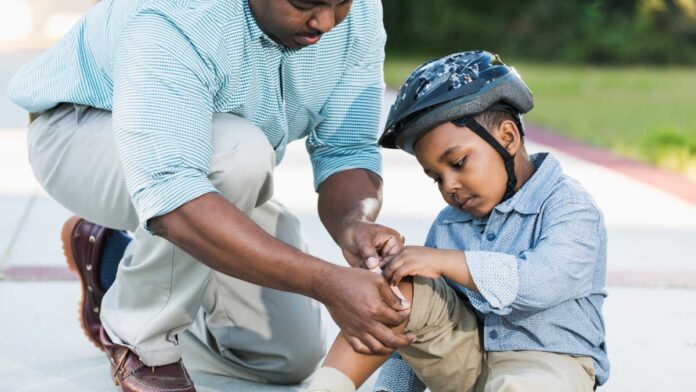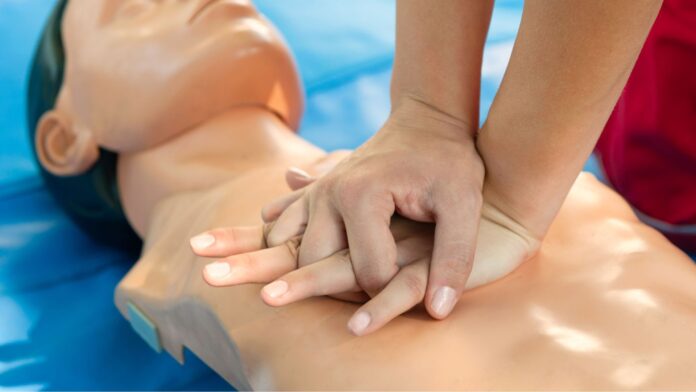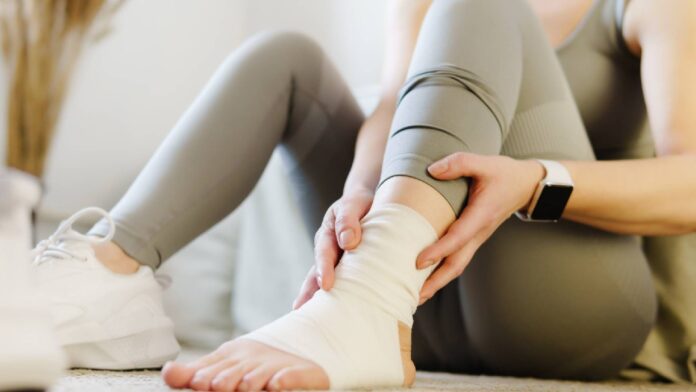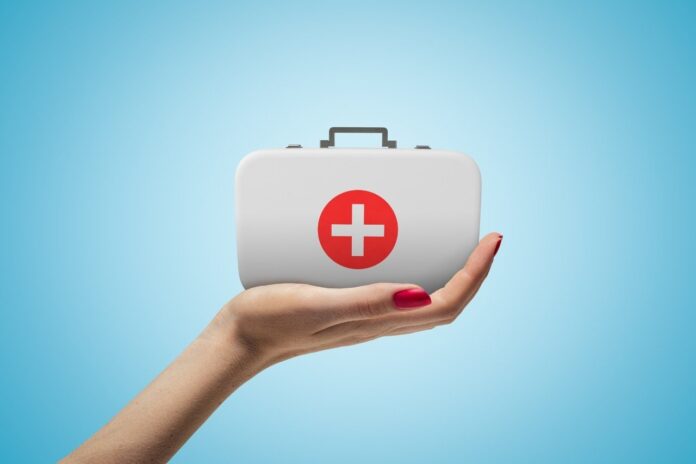In a world where accidents can happen at any moment, being prepared with essential first aid tips is crucial, especially for families.
Did you know that nearly 25.5 million people visit emergency rooms each year due to accidental injuries?
Understanding basic first aid can make a significant difference in these situations. Whether it’s a small cut or a more serious incident, knowing first aid can ensure that your family stays safe and healthy.
Understanding First Aid Basics

First aid is the initial assistance provided to someone injured or suddenly ill. It can be as simple as cleaning a wound or as critical as performing CPR. In any emergency, the first step is to assess the situation and ensure it is safe to intervene. Here are the essential first aid tips every family should know:
- Stay Calm
- Assess the Situation
- Call for Help
- Provide Basic Care
CPR Basics Everyone Should Know

Cardiopulmonary resuscitation (CPR) is a life-saving technique that can be vital in emergencies such as cardiac arrest. Family members need to understand the basic steps of CPR:
Check for a Response
First, see if the person is responsive. Gently tap them on the shoulder and speak loudly, asking, “Are you okay?” Watch for any movement, groaning, or signs they’re waking up. If there’s no response, or they seem unconscious, it’s time to act fast.
Call for Emergency Help
Immediately dial emergency services — or have someone nearby do it. Stay calm and clearly tell them your location, what happened, and the condition of the person. Follow any instructions they give over the phone, and don’t hang up unless they tell you to.
Start Chest Compressions
Place the heel of one hand on the center of the chest (on the breastbone), then put your other hand on top, interlocking your fingers. Keep your arms straight and your shoulders directly above your hands.
Push down hard and fast at a steady pace — about 100 to 120 compressions per minute, roughly the rhythm of the song “Stayin’ Alive.” Let the chest rise fully between pushes but don’t take your hands off.
Give Rescue Breaths
If you’re trained in CPR and feel comfortable, give rescue breaths in combination with compressions.
After every 30 compressions, tilt the person’s head back slightly to open the airway, pinch the nose shut, and give two slow, steady breaths into their mouth. Watch for the chest to rise with each breath. For a child, use gentler breaths to avoid causing harm.
Keep Going Until Help Arrives
Continue CPR without stopping. Don’t pause unless the person starts to move, breathe normally again, or trained help arrives and takes over. The effort you’re making could keep blood flowing to vital organs and dramatically increase the person’s chances of survival.
Handling Minor Injuries at Home

Minor injuries are common in households with children. Knowing how to handle these situations can reduce anxiety and prevent further injury:
Handling Minor Injuries at Home
Minor injuries are common in busy households, especially with children. Knowing how to respond calmly can prevent further harm and ease anxiety. Here’s how to handle typical small injuries:
Cuts and Scrapes
Clean the area gently with soap and water to remove dirt. Apply antibiotic cream to prevent infection, then cover with a clean bandage. Change the bandage daily or if it becomes dirty or wet.
Burns
For minor burns, run cool (not cold) water over the area for at least 10 minutes. Don’t use ice, butter, or oils. After cooling, loosely cover the burn with a clean cloth or non-stick bandage.
Sprains
Have the person rest and elevate the injured area. Apply ice wrapped in a cloth for 15–20 minutes every few hours during the first day or two. A compression bandage can help reduce swelling.
These simple techniques can often mitigate the severity of the injury and promote quicker healing.
Empowering Your Family with First Aid Knowledge

Equipping your family with essential first aid knowledge isn’t just practical — it can make a real difference during unexpected emergencies.
When everyone understands the basics, such as how to perform CPR or manage minor injuries like cuts, burns, or sprains, it helps reduce panic and fear when something happens.
Instead of feeling helpless, your loved ones can respond calmly and effectively, which can provide comfort in stressful moments.
Learning these skills together also strengthens your bond as a family. Consider enrolling in a first aid and CPR class as a group — it’s a meaningful way to spend time while gaining knowledge that could save a life.
Many organizations offer hands-on workshops that teach life-saving techniques in a supportive, interactive environment. If you’re interested in exploring classes or certifications, visit resources like https://cprcertificationnow.com.
Your Trusted Partner in Health and Safety
By incorporating these first aid tips into your family’s knowledge base, you take proactive steps towards ensuring safety in your home.
Being prepared is always better than panicking in the face of an emergency. There are organizations you can join that offer comprehensive first aid courses. They can cater to families and individuals alike.
For more related topics, check out the rest of our blog!







